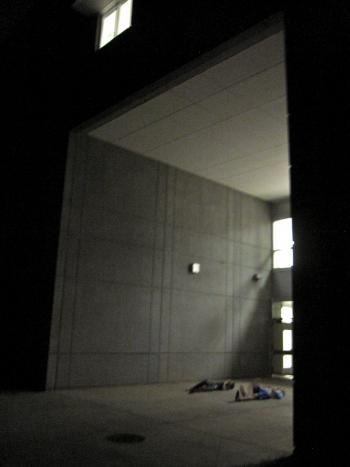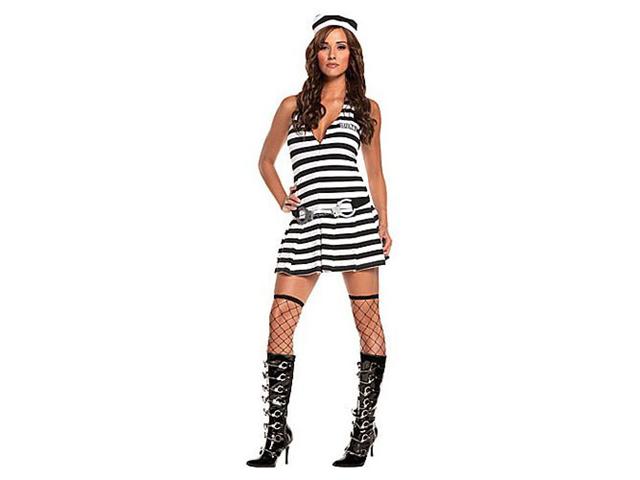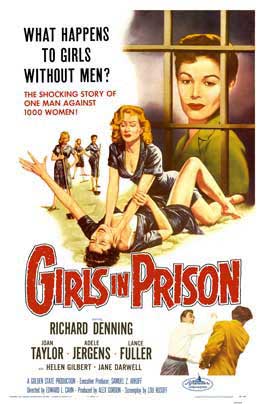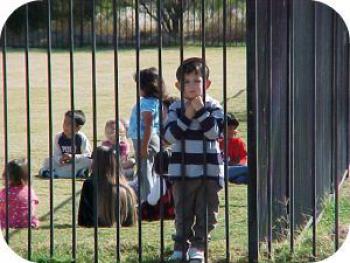Serendip is an independent site partnering with faculty at multiple colleges and universities around the world. Happy exploring!

School Rules?
I have to confess that I am a little bit of a goody two shoes. I have been for most of my life, and my efforts to color within the lines have been rewarded, encouraging me to stay on the straight and narrow. I didn’t cut class, I never forgot my homework, I kept my room clean, and I cried my way out of detention the only time it was ever threatened (for tardiness). And, as a result, I got good grades, kept my parents’ respect, and was regarded by my teachers and peers as an overall good kid. I’ve mostly continued this streak into college. (I worry that it means I’m that kid that I’m writing this on Monday afternoon for a Wednesday due date, so, in that case, I apologize.) I do deviate in some of the socially acceptable college student ways, and enjoy my independence, but I still pride myself on being conscientious. Looking at HSBurke’s photo of the little boy standing behind the bars of his school, I could all too easily see that, through the kind of schooling that is reflected by the T chart, he could in 20 years be the grown man, locked behind the bars of a prison. All this makes me wonder how much of who we are as children, shaped by the environment around us, will be what we become as adults. And, if so, what role do our schools, which appear not dissimilar to correctional facilities, play in creating what brands us as “good” or “bad” people?

Abstract Stories
I’ve been thinking a lot about the images I have of incarcerated women, and can’t help but be ashamed at my lack of knowledge of the topic before this summer. Before this summer, the media influenced all of my images of incarcerated people. I don’t have any family members or close friends who have had any contact with the legal system in the US. I think that as a result, in high school I was definitely guilty of projecting very negative feelings towards those who “have committed a crime.” In a sense, I really placed a lot of blame on them for not making the types of decisions that my family and I have made. In high school, I do know people who ran intro trouble with the law, specifically for drug-related offenses, and I used to think that it was their fault. I probably felt that way because I grew up in the same environment, went to the same school, but somehow I ended up attending an afterschool program instead of doing drugs, I was definitely to all of the other factors that contribute to incarceration.

Setting the Expectation for Deviance: School Policies and Urban Youth
Setting the Expectation for Deviance: School Policies and Urban Youth
With the number of incarcerated people on the rise, economic advantages to building prisons, and incentives for law enforcement to get “tough on crime” it seems that more states are focused on increasing their prison population than their student populations. As state budges cut their funding for schools and increase their funding to build new prisons, the message is clear: there is an expectation that the prison population will continue to grow rapidly. How are schools being part of this expectation of the growth of the prison population? According to Erica Meiners, the school-to-prison pipeline is an issue that is plaguing urban public schools, as school-based-disciplinary policies are preparing poor urban students to enter the prison system. School policies such as suspensions, dress codes, and the use of metal detectors are making schools look more like prisons and students look more like prisoners. How are these school policies setting the expectation for urban youth of color to break school policies instead of thrive in schools? How are these policies made visible to the students, families, and communities that are being targeted?

Voice Paper II: recreating the prison space

When looking through the pictures together, one of the main themes we’ve noticed is the similarity between the physical spaces of prisons and schools. This is apparent when we compare Erin’s photos of her school to Chinese prisons, Johannah’s images of a school cafeteria space to a prison block, and the photos of Overbrook high school as well. To be sure, the feelings and connotations associated with these spaces are far from what we can call comfortable, positive, or perhaps even palpable. This is evident in their harsh fluorescent lights, the cramped living spaces, the bare, white washed walls, and more generally, the stark, unfriendly nature of these buildings. In other words, these places are designed to evoke bad feelings.
Because of this, I start to get a little worried about how people might approach the solving this problem. More specifically, I’m worried that people might think it’s appropriate to believe that the structure of these spaces are inherently evil and, by extension, believe that these spaces must be completely abandoned in order to address problems within these two institutional spaces. The reason why I worry is because I don’t believe a complete rejection of these institutional buildings and is necessarily fruitful, or even possible.

The Eroticization and Objectification of Female Inmates


I was first struck by the eroticization of female inmates when I was researching images of female offenders for Barb’s vision class, but it wasn’t until I saw the “sexy prisoner” costumes that I thought more carefully about the subject. A Google search of “women in prison” turns up a number of movie posters for pornographic or erotic films set in prison. That such a serious and life altering experience could be reduced to a sexual spectacle made me cringe.
Voice Paper #2



“The uniforms are just like the ones we had to wear in elementary school. Same white shirts and blue pants. When I look at these, I can’t help but thinking, what were they preparing us for?”- quote from a student from Percy Julian High School from Meiners’ book “Right to Be Hostile”

2Pac
After writing my paper, I looked up some images of 2Pac with his quotes and I found this. I really like and wanted to share.


2pac, prisons and schools
"There should be a class on drugs. There should be a class on sex education, a real sex education class. Not just pictures and diaphrams and unlogical terms and things like that. There should be a drug class, there should be sex education, there should be a class on scams, there should be a class on religious cult, there should be a class on police brutality, there should be a class on aparthy, there should be on racism in america, there should be a class on why people are hungry, but there not, there’s class on gym, you know, physical education, let’s learn volleyball. because one day…you know…there’s classes like algebra where I’ve yet to go to a store and gone xy+2 and give me my change back thank you. I think you can let me out, I’ve lived alone by myself. And the things that helped me were the things I learned from my mother, from the streets." --Tupac (Age 17).

Doing life vs. living life
I find it really interesting the distinction that Betty Heron makes between "doing life" (as is suggested by her "lifer" status in prison) and "living life". I like that she is taking on a proactive attitude, that she will not be confined by the boundaries of her current situation, but I also wondered at her choice to say that she "dealt herself" (Doing Life, Zehr, pg. 68) her circumstances, given the nature of what we have discussed in class, that arrests and imprisonments (life sentences or otherwise) are often the choice or the "fault" of the unjust criminal justice system and not the incarcerated person themself. The sociological side of me also wants to think of Betty (though she has trouble labeling herself with her first name) as socially and environmentally influenced by many factors that are and were out of her control, both now, in prison, and before the incident that wound her up where she is today. But given the relative "innocence" of a white woman in the criminal justice system, as we have read in several texts for this 360, is she as much a victim of her circumstances as a woman of color might be?



